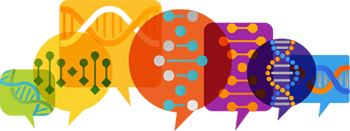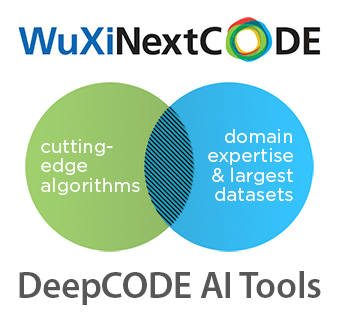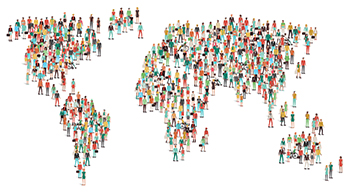Communicating clinically useful results both to doctors and patients will drive success
 Around the world, researchers and clinicians are taking on the challenge of integrating genomic analysis into medical practice. Physicians and patients are increasingly aware of the potential utility of genomic data. As genomics continues to become a more powerful tool in healthcare, there is a clear and compelling need for a commitment to excellence in communication.
Around the world, researchers and clinicians are taking on the challenge of integrating genomic analysis into medical practice. Physicians and patients are increasingly aware of the potential utility of genomic data. As genomics continues to become a more powerful tool in healthcare, there is a clear and compelling need for a commitment to excellence in communication.
At WuXi NextCODE, we are proud to provide sequencing and analysis resources that help doctors:
- Shorten diagnostic odysseys, as I have discussed here; and
- Improve treatment choices, as I have discussed here.
Maximizing the opportunities afforded by the ‘big data’ of genomics necessitates collaboration and communication, which I discuss in more detail here. As part of our genomics business, we are dedicated to the highest standards of communication – indeed, we view effective communication as central to how our technologies will improve health in both the near and the long term.
The task of harnessing the vast and expanding quantity of genomic data to improve clinical care requires interpretation and discovery powered to translate the data into clinically useful information. Leveraging that information to improve patient outcomes also requires clear and accurate communication:
- Between researchers and clinicians;
- Between specialists in different medical fields;
And, increasingly,
- Between doctors and patients.
As the recent CLARITY Undiagnosed competition highlighted, applying genomic data to medical practice involves interpreting the sequenced genomes and identifying molecular diagnoses – and a third step: communicating clinically useful results both to doctors and to patients.
The CLARITY challenge winners, including WuXi NextCODE, were explicitly recognized for the quality and clinical utility of their reports.
Studies and surveys have shown that many people favor greater access to genetic information. Individuals want analysis of their genomes in order to:
- Reveal their unique risk factors for inherited diseases;
- Pinpoint a diagnosis if they are ill; and
- Guide their decisions if they are seeking treatment.
Genomics is helping to inform patients in all these ways.
In addition, genomics demonstrates enormous potential to empower individuals.
The hundreds of thousands of people who purchase genomic testing through direct-to-consumer businesses like 23andMe are demonstrating a robust enthusiasm for gathering genomic information. And patients enrolled in clinical trials and donors participating in population-wide genomic studies express a desire to be more informed. Patients and consumers consistently seek resources that transform their personal genomic signatures into information they can use to make better healthcare and lifestyle decisions.
And most patients and consumers are willing – often eager – to share their genomic information to aid medical research and discovery. 23andMe reports, for example, that 80% of its customers consent to share their genomes for research.
It is unmistakably clear that, in the not-too-distant future, every individual in many countries around the world will have their genome sequenced. Throughout a person’s life, medical professionals will be able to access genomic information to guide health decisions – from identifying inherited conditions to assessing risk for complex diseases to calculating appropriate treatments, drugs, and even dosages for truly personalized healthcare.
The more effectively we communicate – the more we share information within the research community and parlay that into clinically useful information for patients – the greater the benefit to all.
As much as people understandably prefer simple, definitive answers to questions about their personal health, the information that genomics provides can be complex and even ambiguous. A genetic variant might be identified, for example, that can be tied to family medical history and translated into a probability or likelihood. This was the case for Angelina Jolie Pitt, who noted in her New York Times piece that her genomic analyses “gave [her] an estimated 87 percent risk of breast cancer and a 50 percent risk of ovarian cancer.” Percentage risks are nuanced, and individual perceptions of acceptable risk vary considerably. It is therefore difficult to define precisely the circumstances under which a genetic variant becomes clinically actionable.
Or a genetic variant might be identified which gives physicians clues but does not explicitly identify a specific disease. For example, a patient seeking a diagnosis may have a genetic variant that correlates to a number of diseases involving dysregulation of lipid metabolism. Identifying the variant provides physicians and caregivers with a clear direction for further analysis and treatment, but does not yield a conclusive diagnosis or prognosis.
Or a genetic variant might be identified which has yet to be understood as causing or playing a role in disease. Such a variant may occur by chance and have no medical relevance, or its meaning may be uncovered as science in the field advances. But for the person who is having the genomic information analyzed today, it offers no actionable information.
As all of these examples illustrate, effective communication about genomic information can be a significant challenge. There is a risk that poor communication will be a barrier to the adoption of genomic medicine, but if we strive to communicate clearly with patients and the public, our successes will likely accelerate more widespread use of genomics. The role of genomics in transforming health care will grow exponentially as we all endeavor to improve communication with patients, their families, and the public at large.
Our work at WuXi NextCODE is advancing the transformation of medical practice through genomics. As part of that vision, we recognize the critical importance of facilitating effective communication among all stakeholders. We provide the resources that enable researchers and clinicians to identify disease and inform treatment decisions. And we strive to add additional value by communicating about genomic information accurately and proactively, all with the ultimate goal of meaningfully improving patient outcomes.









